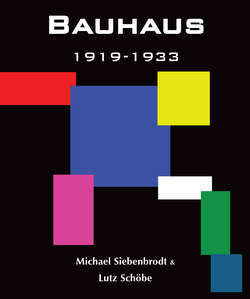Читать книгу Bauhaus. 1919-1933 - Michael Siebenbrodt - Страница 18
На сайте Литреса книга снята с продажи.
History of the Bauhaus
Bauhaus Dessau: Academy for Design (1925 to 1932)
The Closure of the Bauhaus in Dessau
ОглавлениеMies van der Rohe had tried to keep the Bauhaus politically neutral. Still, the school remained a thorn in the flesh of the National Socialist Party, which was gaining strength at that time. In the Bauhaus’s end-phase in Dessau, relations with the city had reached their nadir. The NSDAP declared its fight against the Bauhaus, which was now denounced as a “Jewish dive” and for the party embodied an intellectual opposite to its own world view, one of its central topics. The budget was cut further so that the school became largely dependent on licence income and was hardly able to survive.
In May 1932 the parliamentary elections in Anhalt led to the fall of the state government, which had up until then been in favour of the Bauhaus, and the right-wing gained the majority. Anhalt thus became the first German state with a government led by National Socialists, who seized the opportunity to weaken the Dessau magistrate with a targeted personnel policy. On 8th July 1932, Paul Schultze-Naumburg, the National Socialist Prime Minister Alfred Freyberg, and other city and NSDAP representatives including Fritz Hesse, who was still mayor, visited the Bauhaus. Just a few days after this visit, the NSDAP, who in the Dessau city council elections of November 1931 had become the strongest party, proposed the closure of the institution. Hesse and four Communists agreed with the proposal, while the Social Democrats abstained. Thus the dissolution of the Bauhaus was sealed. Student protests with petitions in newspapers and to the Reichspräsident (national President) were as ineffective as a tour with more than nine hundred people from Chemnitz, who had specially travelled there by train.[14] On the last day of September 1932, the Bauhaus left Dessau.
14
See Bauhaus Diary, Entry dated 10.02.1932, in: Hahn, Peter (ed.): bauhaus berlin, Weingarten 1985, p.96.
